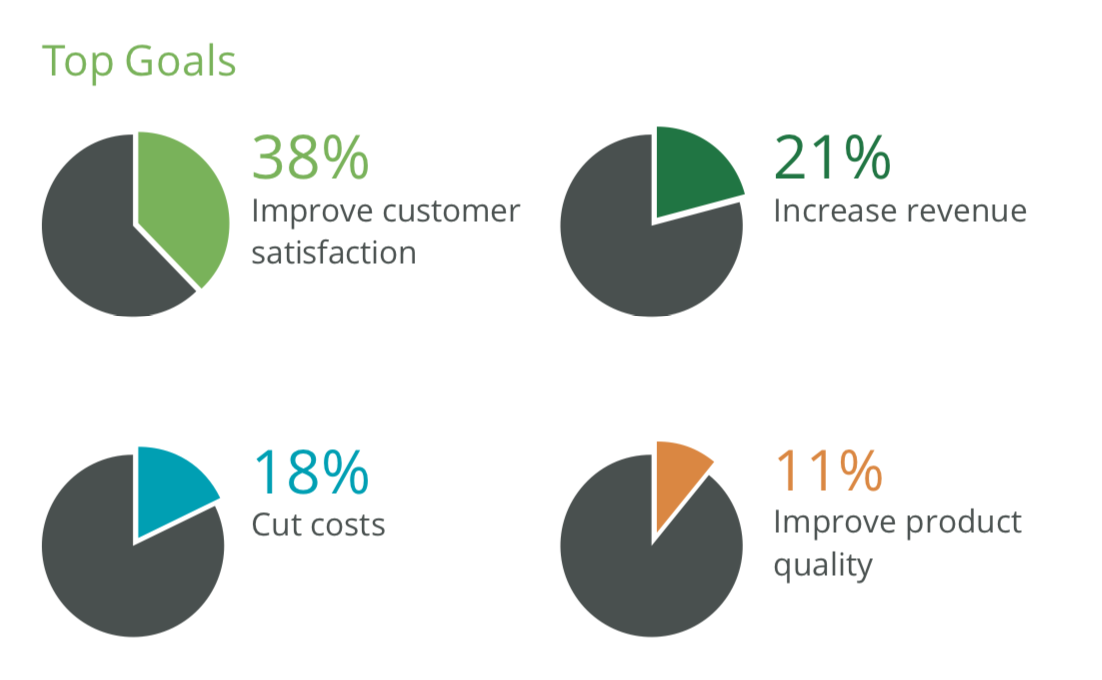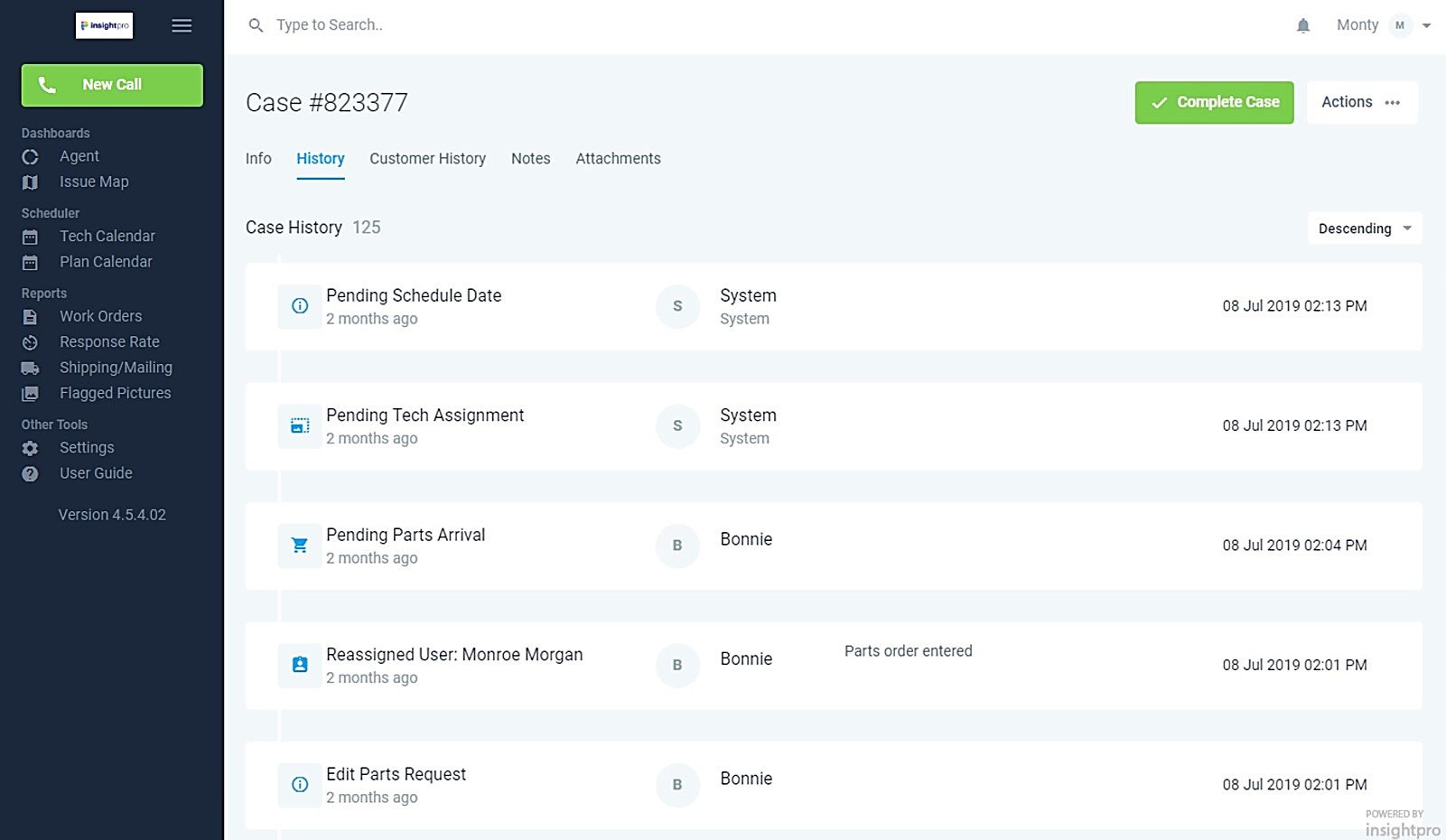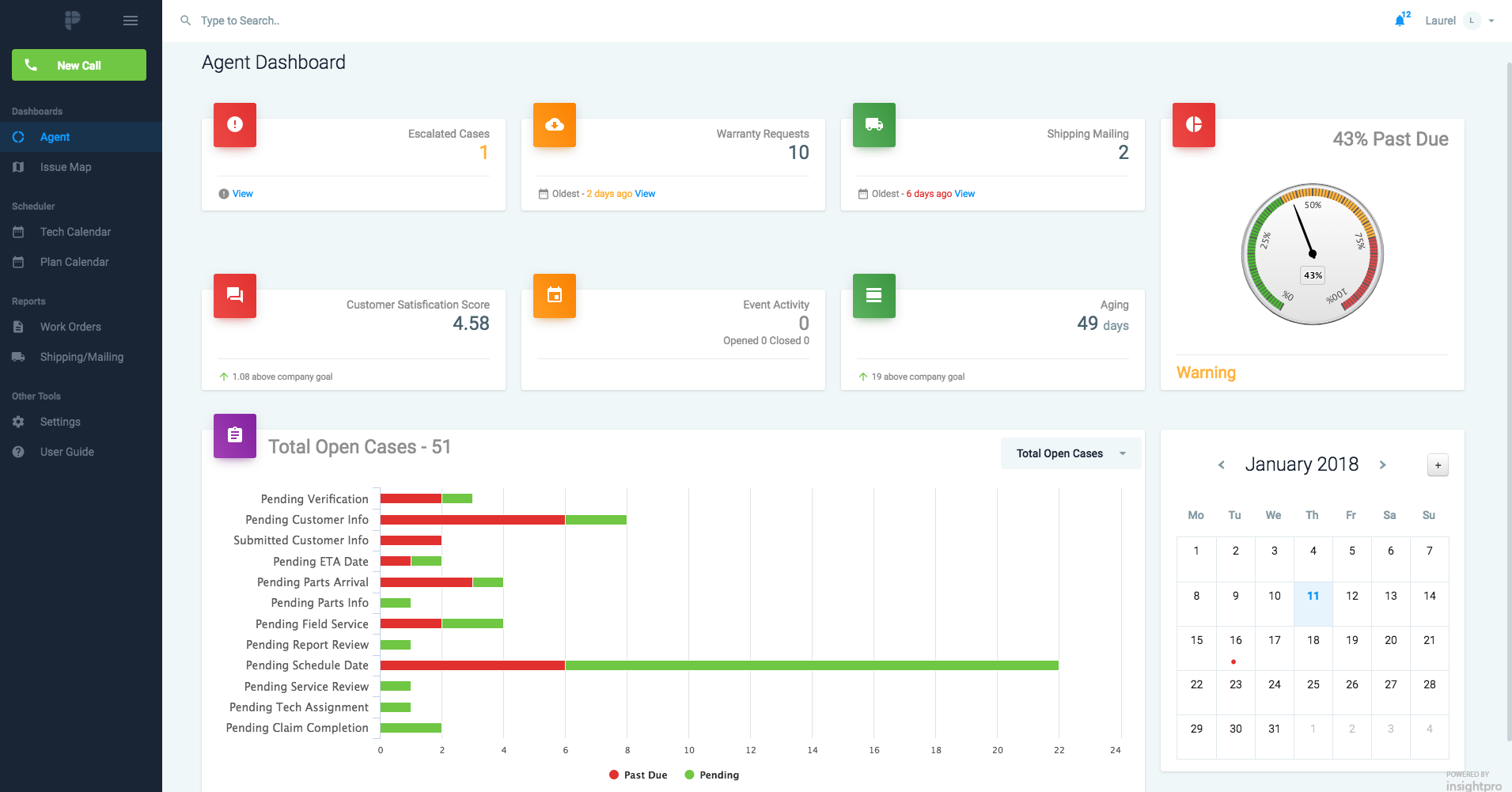Most manufacturers consider their warranty management process to be nothing more than a drain on resources and revenue – it is a cost of goods sold, after all. Call it a stepchild or necessary evil but investing in warranty claims processing hasn’t exactly been at the top of the priority list for most executives.
The warranty management process is viewed as a manually intensive administrative task that’s not exactly the most productive or efficient. However, more manufacturers are recognizing the opportunity to reduce costs and improve the customer experience by creating an effective warranty management process.
Companies are jumping at the chance to make their warranty service departments considerably more effective and efficient with tools like warranty management software. A recent study shows the most common reasons executives would consider investing in their warranty service department:

It goes without saying that executives would consider investing in their warranty service department in order to improve product quality and promote customer satisfaction. Cutting costs and increasing revenue are often overlooked benefits of a streamlined warranty management process. If you can add to your bottom-line, shouldn’t the process of implementing a warranty management software be a no-brainer?
So now that executives are more likely to listen when the service manager or others ask them to invest in improving the warranty service operation, let’s talk about some of the biggest challenges faced in managing warranty claims. At the end of the day, it’s all about customer service, right? Right…but it doesn’t end there.
Even if you have a software solution that is “working” for you, the reality is that you still face many of the challenges outlined below. Having a solution in place doesn’t necessarily always mean it’s the right choice.
Duplicate Data Entry
In today’s technology-driven society, where there’s robots and self-driving cars, why are you still entering the same data and information in multiple places? Eliminating redundant data entry is one of the top challenges of building an efficient warranty management process. Pace Productivity estimates that more time is spent on administrative tasks than any other area – aka updating customer information.
The right warranty management system is designed to avoid the redundancy of capturing information multiple times. InsightPro auto-populates information that’s entered the first time in each area of the application associated with that claim.
Claims Falling Through the Cracks
When it comes to the warranty management process, most people typically consider providing exceptional customer service to be one of the greatest challenges. And, historically, it certainly has been.
Remarkable customer service requires constant communication with customers to schedule service, provide updates throughout the life of the claim and offer explanations when jobs can’t be completed. The customer may not speak with the same person every time, but an effective warranty management process allows each customer service rep to pick up exactly where the last left off in the conversation.
And those are the challenges that tend to cause the most pain when handling warranty claims. Upset customers become irate when they don’t think their warranty claim is being handle quickly and professionally. Eliminating claims from slipping through the cracks is essential to ensuring consistent communication takes place.
Companies utilizing a warranty management software are significantly quicker at responding to customer concerns and providing useful information because they know exactly what’s happened previously. They’re able to provide realistic next-steps and keep the claim moving forward, which is what the customer ultimately wants. Communication is key to your warranty management process.
Eliminating Recurring Issues
The perception of warranty and service departments is shifting from a cost to a revenue generating opportunity. Instead of accepting the status quo, companies are finding easy ways of drastically reducing the amount spent on claims with warranty management software. Many of the issues companies experience time and time again are a result of neglected or broken internal processes.
Stop for a second and consider how simple some of the adjustments could be by answering these three questions honestly: Hypothetically, if I asked you…
- How quickly and easily could you run a report showing all the issues that customers have experienced with your products over the last six months?
- After reviewing the data in this report, what information could you draw from it?
- How often are you reviewing this type of data to assess where your warranty management process could improve?
Maybe your quality control team already does something similar but lacks the type of accurate, in-depth analytics necessary. Or, perhaps they don’t have the right tools to easily identify recurring issues and must rely on memory to accomplish this as best they can. Sometimes the slightest tweak to your warranty management process can have the greatest impact.
InsightPro not only gives your team the reporting necessary to identify trends; it also allows anyone in the company to flag photos for production to review. Images can be accessed during monthly quality meetings to address unresolved issues. With everyone focusing on minimizing recurring problems, think about the revenue being added to the bottom-line.
Improving Productivity & Efficiency
How do field techs stay efficient and consistent? And how do they get the information they gather at the customer site back to the office quickly and accurately. A mobile app can solve this issue. With custom forms designed to walk a field tech through the process ensures efficiency and consistency.
Because InsightPro is updated in real-time, employees working in the office can access the information they need with just the click of a button. Utilizing real-time information, the customer service agent can follow up to ensure the customer is satisfied, preventing field techs from spending several hours at the end of each day filling out forms and faxing paperwork back to the office.
Reporting
Why does it take so long to get the reports you need, when you need them? Data is meaningless if it can’t be compiled into relevant reports that quickly guide the user to the story behind the data. Decisions today should be made with data to back them up. And data cannot be used to support decisions if it’s just sitting in a spreadsheet or database not being viewed.
Your Current Solution May Not be the Right Solution
A lot of software, whether they’re CRM’s or ERP’s, sell themselves as an “all-inclusive” solution. But once you implement and start actually it to complete tasks and manage business, it quickly becomes apparent that they can do a lot but not a lot well. They are very wide in the number of areas they cover, but not very deep in any single area.
For example, CRM’s tend to be great solutions for storing sales leads and tracking movement along a sales process. But when it comes to managing projects, where processes can be different from industry to industry and even company to company, CRM’s don’t always get the job done. And if they do, it requires a significant amount of changes to processes and “workarounds.”
In today’s world of technology solutions driving the success of a business, shouldn’t you have the right solution for every part of your business?
The Right Solution is the One Designed for Your Business
The right solution is the one specifically designed for your warranty management processes. When it comes to managing warranty claims, delivering excellent customer service and keeping costs low may be a challenge but the process itself is pretty straight forward.
- Gather information about the customer and their product
- Verify that the warranty claim is valid
- Determine if new parts are necessary and, if so, order parts
- Determine if service is required and, if so, schedule a field tech
- Review the information from the service visit
- Follow up with customer to make sure issue is resolved
- Close the case
The warranty management process may not always follow this path perfectly (e.g., if the wrong part is shipped or if a second trip is required by the service tech), but it should be consistent overall.
Unfortunately, large out-of-the-box software solutions tend to be built around generic processes that assume much of the management of the process will be done manually, or will occur as the result of the user “making sure it happens.” This is how the big software can sell to companies of all sizes and industries
This type of manual warranty management process is exactly why you need software in the first place. Software is supposed to take the “manual” of of the process as much as possible. When it comes to customer service, the most important thing is to make sure nothing falls through the cracks.
In addition to automating the warranty management process and providing timer-based alerts, software should be a tool for the user’s work environment. In the ever-increasing mobile world in which we live, having the right mobile tool is as essential as having the right screwdriver or the right wrench. Many companies rely on paper forms or, at best, fillable PDF’s to gather information from their field service teams. Unfortunately, these “tools” don’t actually the service technician to their job. They just add work to an already busy schedule.
The best tool for field techs is a native mobile app that works online and offline. The app should help the service tech manage schedules, route to their service locations, and, most importantly, walk them through the process and capture the information the office needs as they complete their work.
In order to make field techs more efficient, the app should have forms designed for each type of service request. Using logic-based questions and fields, the service tech can know exactly what needs to be done next based on their response to the previous question.
Nothing gets skipped and when the service tech is finished with each service call, the information can be immediately transferred back to the office – or, if offline, the information can be transferred once the device is back online.
With all of the improvements that the right software can bring to the customer service and field service teams, the data that is gathered should be used to support decisions around personnel and production. This is where the cost savings as a result of using the software can become most apparent. Reports such as cost by issue type or production location should be instantly available. These reports, combined with photos from the customer and from the field service team, can assist communication between operations and production to identify recurring issues and reduce future claims by addressing the issues quickly.
Trend reports should be monitored to show progress toward goals and identify issues before they become more costly. Many companies do not look at trends often enough because it takes so much time and effort to generate the reports. The right software will put that information at your fingertips.
The Bottom-Line Benefit of the Right Software
Warranty claim management is more than just a necessary evil that companies must face. A well thought out warranty management process can become an opportunity to grow business by providing excellent customer service. The way a claim is handled can not only make that customer happy with their previous purchase – it can bring that customer back the next time they purchase a similar product.
An exceptionally designed warranty management process can reduce a company’s expenses and positively impact the bottom line. Having instant access to key analytics helps executives and managers improve their decision-making process based on reliable data.




